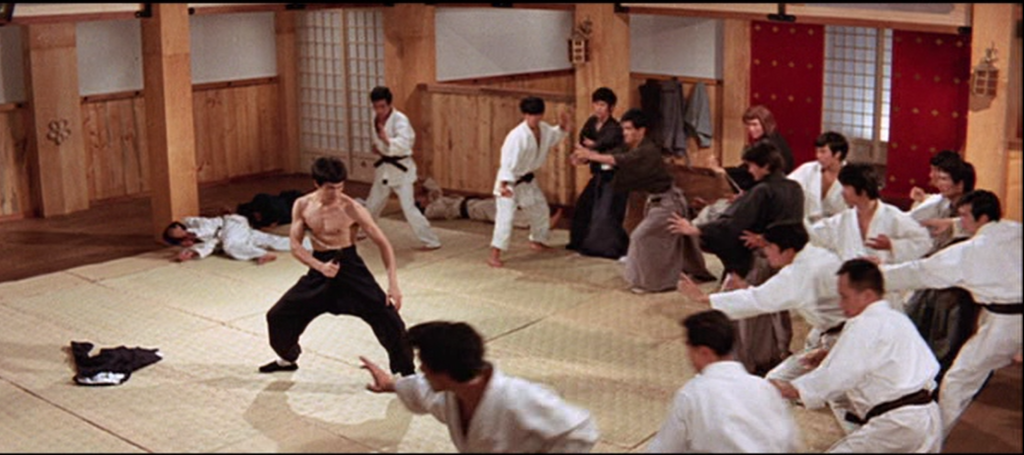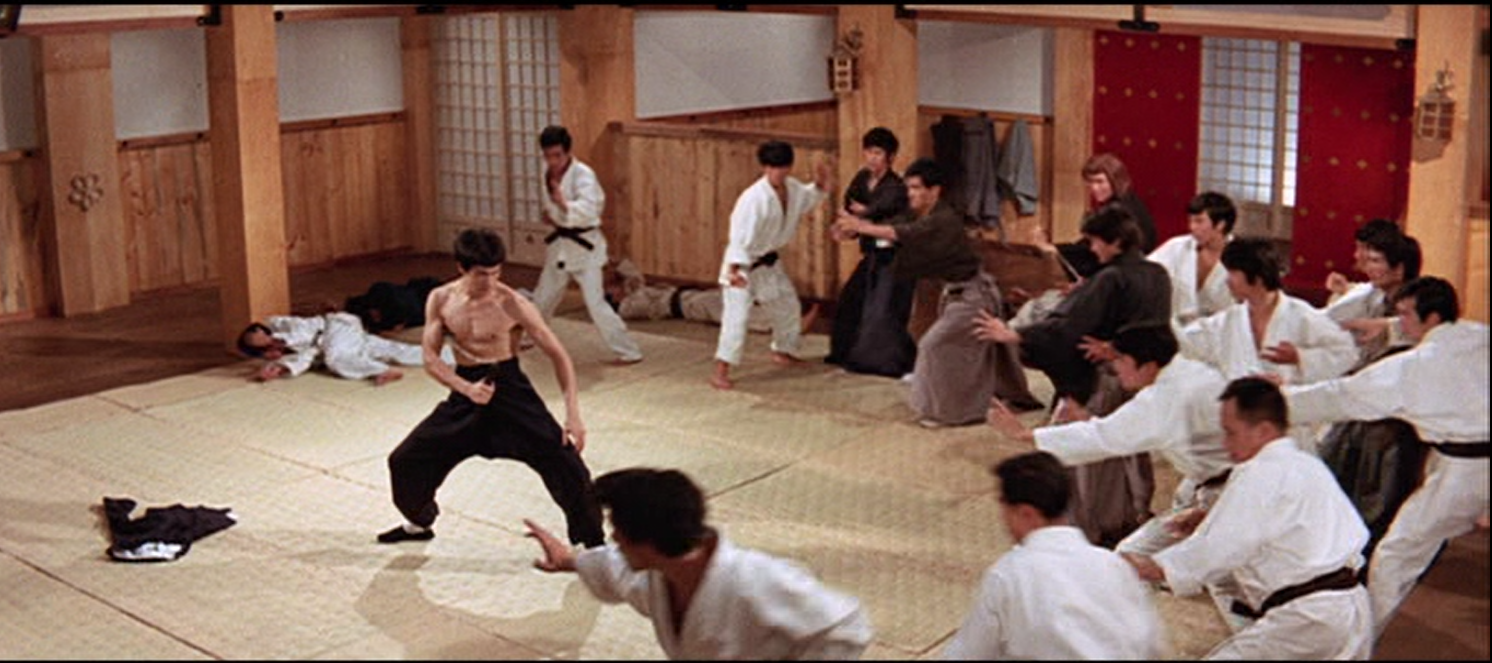Movie Review: Fist of Fury (1972) directed by Wei Lo; aka “The Chinese Connection”
It is the 1930s, and Imperial Japan is on the rise. In Shanghai, they hold great power, especially in the International Settlement, and the native Chinese are treated as second-class citizens in their own country. Martial artist Chen Zhen (Bruce Lee) has been away for some years, and is unaware of how bad things have gotten. He returns to marry his childhood sweetheart Yen (Maria Yi), only to find that his teacher Huo Yuanjia has recently passed away. Chen is grief-stricken, even more so than the other students of Huo’s martial arts school. But worse is to come.

The memorial service is interrupted by representatives of a nearby Japanese karate school. They present the mourners with a sign reading “Sick Man of Asia” and Interpreter Wu (Ping Ou-Wei) taunts the Huo school with accusations of weakness and cowardice. Still bound by their school’s principles of pacifism, only using martial arts in self-defense or defense of the nation, the mourners cannot respond, though the hot-headed Chen is barely able to contain himself.
Later, Chen goes to the karate school to return their “gift” and succeeds in provoking their students into attacking him, giving him the excuse to beat them all up. Unfortunately, while the getting beat up part was not supposed to go so badly, this is exactly what Hiroshi Suzuki (Chikara Hashimoto), leader of the Japanese school, had planned. Now he has an excuse to bring in the authorities to close down the Huo school. (There is apparently some personal bad blood between Huo and Suzuki that the Huo students are unaware of and is never explained.)
The Huo students plan to have Chen leave Shanghai on the next train to draw off the heat, but then Chen learns that Huo’s death was not due to illness, but deliberate murder. Chen kills the direct murderers, then seeks bloody revenge on the evil Suzuki and his henchmen. This leads into the final tragedy.
This revenge tragedy was loosely based on the actual death of Huo Yuanjia under mysterious circumstances. As the disclaimer at the beginning of the movie explains, the story goes with the popular hypothesis that Huo was poisoned by the Japanese.
Good: As is proper for tragedy, the lead character is a man of superior qualities, a skilled martial artist (the first combat scene makes the Japanese students look weak, but no, Chen is just that much more awesome at martial arts than anyone else), honorable, and deeply loyal to his teacher. But he has a fatal flaw, not considering the effects his actions will have on others. Each time he strikes against the villains, it makes things worse for his fellow students. Mind, the story doesn’t give him a lot of other options. It’s made clear that if Chen doesn’t seek vengeance himself, the Japanese will get away unscathed and Huo’s death will not have justice done.
There are some bang-up martial arts sequences, including Bruce Lee’s first cinematic use of nunchucks. One of the highlights is Chen battling Russian refugee Petrov (Robert Baker), who’s strong enough to drive nails through wood with his bare hands.
Translator Wu is a hissable villain, sucking up to the powerful invaders even while they treat him like dirt.
Less good: The politics is heavy-handed, reportedly to the point that Bruce Lee was uncomfortable with how they were portrayed (that and personal disagreements led to him no longer working with the director.)
Due to low budget, no effort was made to hide 1970s fashions and hairstyles on extras in some scenes, breaking immersion in 1930s Shanghai. Also, there’s a fellow who’s apparently supposed to be a Sikh in one scene, with an appalling makeup job.
Yen is barely in the film and is only named in the credits; she’s just there to be a love interest for Chen.
Content note: Racism against the Chinese is a major theme throughout, depicting them as the oppressed underdogs. The structure of the film thus makes the Japanese as a people the villains. (But then again, see actual events in China at the time.) A park in the International Settlement has a sign forbidding
“dogs and Chinese” with exceptions for dogs accompanied by white people.
Lots of kung fu violence, with a small amount of blood. Corpses are hung up on display.
Overall: An okay movie carried by Bruce Lee’s performance. Recommended for Bruce Lee fans.

